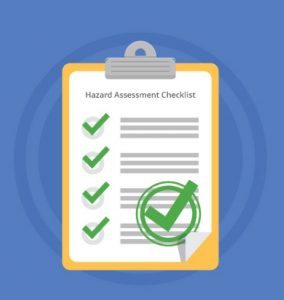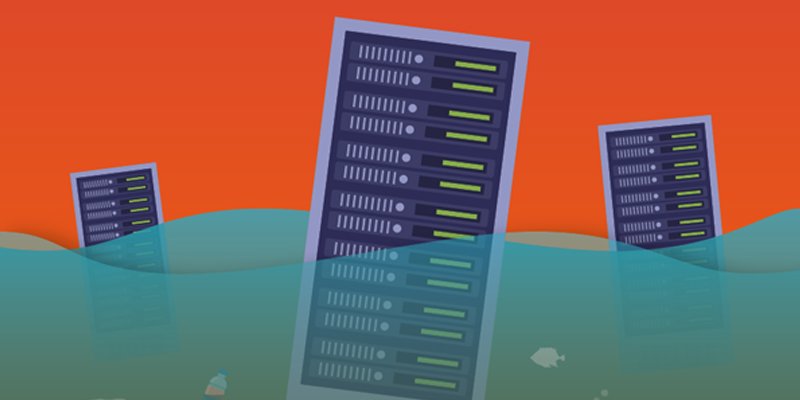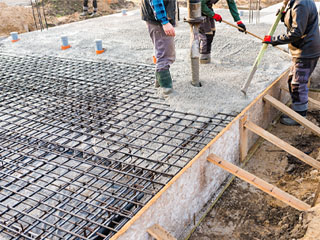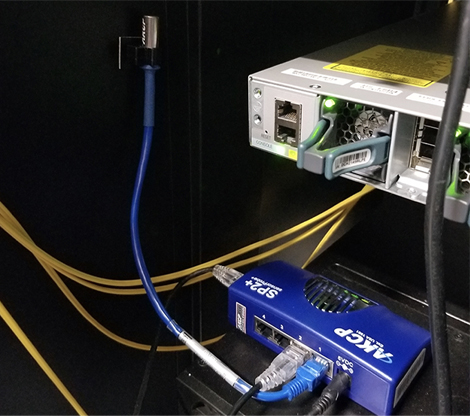Is Your Data Center Protected From The Elements?
Data center owners and operators need to understand climate risks and their implications on data center infrastructure. The consequences of climate change are forcing enterprises to reconsider their entire resiliency strategy.
In March of 2020, Western Express, a major national U.S. trucking outfit, learned this lesson the hard way when a tornado wiped out its headquarters in Nashville, the home to nearly all its critical IT infrastructure.
Since the year 2000, climate-related disasters have increased by 83%, large scale floods have more than doubled, and severe storms have increased by 40%.
With more frequent and longer-lasting power outages, data center operators must plan for the unavoidable to maintain 100% reliable service with zero downtime.
That is why it is critical to create resilient infrastructure, fortify existing data centers to resist natural calamities, and prepare for weather-related disasters. There has never been a better moment to put plans in place to deal with potential interruptions.
Here are five simple strategies for businesses to prepare for climate change, lessen the effects of severe weather events, and even save money:
1. Beware of Potential Hazards

Photo Credit: www.hseblog.com
The first step in preparing a data center for the effects of extreme weather events is to understand your climate risks and identify a facility’s strengths and vulnerabilities.
Extreme weather-related events in the United States, such as the February 2021 winter storm in Texas that strained electrical grids and the 2018 Camp Fire in California, which was the deadliest and most destructive wildfire in the state’s history, have highlighted the importance of risk mitigation.
Solid site selection and dynamic data center design are great, but they might not be enough in the next decades. Consider data centers constructed on ground that was previously flooded just once every 500 years. The 0.2% chance of flooding wasn’t much of a concern. However, due to the consequences of climate change, floods may now occur once every 100 years.
Climate change is coming to stay, according to the trend. Floodwaters have reached generator storage basements, data center power substations have been turned off for days due to wildfire risk, and cooling systems have been overloaded by high temperatures.
We recommend dividing risks and opportunities into three categories:
-
Site-Level Risks
Disastrous events or a protracted change in conditions pose risks to the local site.
-
Regional Risks
Supplies, utilities, staff, and access are non-site-related risks to the local community.
-
Sector Disruption And Change
Climate change will have secondary consequences on governance, costs, technology, and location preferences, among other things.
Identifying and measuring risks from the start can help you understand where your vulnerabilities are and how to reduce them in the future.
2. Weather Proof Data Center

Photo Credit: www.datacenterdynamics.com
It’s time to act now that you’ve learned about the dangers.
It’s not enough to create reinforced concrete walls or clamp server cabinets into the ground to protect a data center from strong storms. Hardening your data center nowadays entails putting in place technologies that free up energy and capacity that may be used to boost data center resiliency.
One technique to assure uptime is to install intelligent switchgear that automatically switches a power supply from its primary source to a backup source when it detects a problem or outage. Furthermore, increasing the setpoint temperature inside the data center might help save money and energy.
When considering how to protect a data center, there are numerous little but significant improvements that owners and operators might consider. Consider the following scenarios for distinct climate risks:
-
Heatwaves
Because servers are prone to overheating, lithium-ion batteries should be used. They’re more compact, lighter, and can withstand extreme temperatures.
-
Wildfires
Wind-blown embers that can collect near fuel tanks should be considered, as should the travel distance, burning duration, and intensity of embers, as well as supplementary filtration systems to handle excess ash and smoke.
-
Floods
Adding platforms or raised flooring to a data center can be the difference between a susceptible and a resilient data center. Pumping systems and flood barriers are both low-cost options for reducing danger.
3. Partner With IT Management
Securing critical infrastructure necessitates collaboration between FM and IT that begins far before an emergency occurs.
Drills for emergency operating procedures should be rehearsed regularly and as far ahead of time as possible. Few operators have ever planned for a total data center failure, and extreme events may be the first time that many resiliency techniques incorporating active-active workloads are put to the test at scale.
To ensure that services can be restored manually, conduct regular data center “black starts,” the act of returning an electric power station or a portion of an electric grid to operation without relying on external electric power during a total or partial shutdown.
Invest in IT equipment that produces less heat and consumes less power. Non-essential applications can also be turned off, providing important services with additional capacity and battery life.
Virtualizing physical servers and equipment in a data center facility not only improve IT infrastructure and resource utilization but also lowers operational expenses by removing redundant cooling infrastructure.
4. Link Sustainability And Resilience

Photo Credit: lamdahellix.com
Even if a data center isn’t directly affected by severe weather, every facility relies on water to keep servers cool. More efficient chillers, higher temperatures for evaporative cooling systems, and more inventive options like immersion cooling can all help save water and lessen environmental impact.
While ESG strategies and goals may not have a direct impact on data center resiliency, they do have an indirect impact on cost constraints and operations. Ensure that your ESG targets for energy efficiency, carbon reduction, and water conservation complement your resiliency efforts.
5. Invest In Remote Monitoring And Management
Because of the pandemic’s impact on remote work and enhanced cybersecurity, facilities that invested in data center monitoring and management may be ahead of the game when it comes to environmental monitoring.
Extreme weather can cause business interruptions. Facility Management can provide the correct mix of network and IP monitoring tools to assist keep a data center in top shape and deliver rapid notifications to issues that threaten server settings.
Server rooms and facilities are protected against extremes in server temperature, power fluctuations, and humidity variations thanks to remote environmental monitoring and management. Wireless sensors can provide a holistic view of a facility’s health, as well as mechanisms to alert off-site personnel about efficiency issues.
AKCP Environment Monitoring Solutions

AKCP Environmental Sensors
AKCP Monitoring Solutions includes all of the benefits of an environmental monitoring system. Simultaneously, it adds hardware to the environmental monitoring system software, such as sensors and data collection terminals, wired and wireless.
Areas, where environmental factors are monitored, can be represented as desired and put in line with the relevant area’s plan using the visualization tool. As a result, it provides a more effective and accessible method of environmental monitoring.
AKCPro Server
sensorProbe
SensorProbe devices, in a form factor that allows for 1U, 0U, and DIN rail mounting. sensorProbe comes in several standard configurations or can be customized by choosing from a variety of modules such as dry contact inputs, IO’s, internal modem, analog to digital converters, internal UPS, and additional sensor ports
Environmental Monitoring Sensors
Monitoring environmental conditions is important to your daily operations especially with the lurking threat of climate change, deploy sensors to monitor temperature, humidity, airflow, and water leaks.
Cabinet Analysis Sensors
The Cabinet Analysis Sensor (CAS) features a cabinet thermal map for detecting hot spots and a differential pressure sensor for analysis of airflow. With an L-DCIM or PC with AKCPro Server installed, dedicated rack maps displaying Cabinet Analysis Sensor data can be configured to give a visual representation of each rack in your data center. If you are running a hot/cold aisle containment, then containment views can also be configured to give a sectional view of your racks and containment aisles.
Water Leak
Ideal for detecting water leaks in hard-to-see areas, such as under-raised floors and false ceilings. The Locate Rope Water sensor will give you a precise location of the water leak so you can respond promptly to protect your enterprise resources from water damage.
AKCP Smoke Detection
In the case of a fire, additional smoke detectors in the server room will provide IT, workers, with as much notice as possible. This enables responsible staff to start catastrophe recovery operations as soon as feasible, reducing overall downtime.
Tank Depth Pressure Sensor
Suitable for tanks up to 20 meters in depth. Tank depth pressure sensors will measure the pressure exerted by the column of fuel above. By entering the tank dimensions the volume is calculated. Fuel tank volume can be displayed and graphed.
Battery Monitoring Sensor
Monitoring of battery terminal temperature, current, and voltage. Ensure your battery is healthy and has sufficient voltage to start the generator when needed.
Reference Links:
https://www.computerworld.com/article/3431148/why-data-centres-are-the-new-frontier-in-the-fight-against-climate-change.html
https://journal.uptimeinstitute.com/extreme-weather-affects-nearly-half-of-data-centers/
https://www.climateneutraldatacentre.net/
https://www.techuk.org/asset/98E70633-1060-42EE-A0278548E6E828CB/





